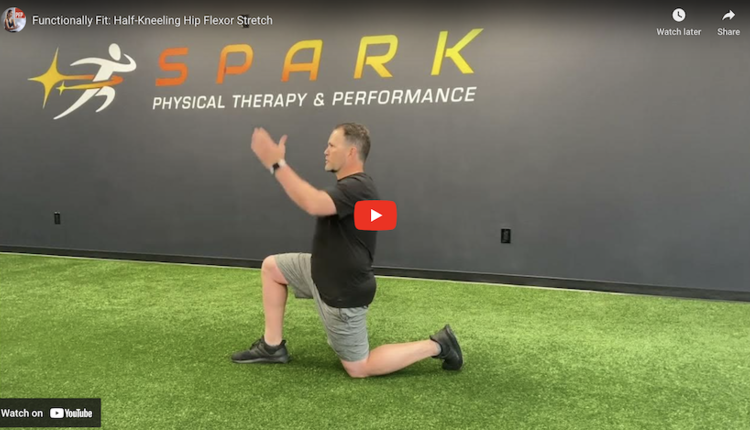Human beings are social creatures, and many of us require motivation from others before embarking on a successful weight loss regimen or a fitness contest — it is extremely easy to give in or give up when you are fighting the battle alone. Utilizing the community and creating an environment for members or non-members of your facility is a terrific way to offer a sense of camaraderie and friendly competition. Almost every health and wellness center emulates this by offering group fitness classes and a variety of other options. Unfortunately, this does not replicate the type of social environment necessary to get most people out of their chair and into the club.
All of us have heard about a "fitness challenge" or a "weight loss challenge" at some point, and many of us have actually taken part in one of them. By promoting these challenges through the community or local businesses, our health clubs, private studios, corporate programs and personal trainers can bring in new members at astonishing rates. It is no secret that health problems from obesity and excess weight are on the rise. People everywhere want results, so be sure to implement your professional guidance by helping to change their current behaviors, and continue to concentrate on your clients becoming healthier and stronger. As wellness professionals, we know that focusing on behavior change is a great way to improve your body composition and eventually stop focusing on weight loss. The roller coaster of weight loss and weight gain can be a never-ending, self-defeating battle. Instead, make sure to educate potential clients to take responsibility for creating a healthy lifestyle and stick with it for a lifetime — that's what counts!
Track Progress with a Visual Log
One of the ways that a community challenge works effectively is having each challenger log into a secure section on the facility's website and keep track of their progress. At the end of the competition, they can print out graphs and charts to visually compare their progress with other participants and clearly see their own results. Being able to see a line graph of their progress will further motivate any non-members to become a member at the end of any challenge. This charted progress allows the facility's sales team to discuss the before and after statistics with potential new members. Imagine how much more effective this could be if you were to send out an email to each participant congratulating them on their efforts and reminding them of the personal training or membership specials that are offered!
Here are a few easy steps to begin:
· Start with a sign-up sheet, where participants provide their health history and full contact details.
· Each challenger can then be provided with a facility pass, perhaps for one week, and a free session or two with a personal
fitness trainer.
· Implement an eight-week program, allowing optimum time to assess some goals, and identify reasonable changes to make in their lifestyle.
· Include before and after body composition testing, resting metabolic rate analysis and a weekly motivational email from you. Provide information and education on topics such as how to handle food-filled holiday parties, body image, portion control and grocery shopping with weight loss and strength gains in mind.
· Make sure the facility or the assigned personal trainer keeps a record of each participant's weight and/or body fat measurements.
· Upon setting up the parameters, have the participant at the end of period who achieves the greatest fat loss, body percentage loss, strength gains, etc. receive a free month or year membership to the facility as well as a local newspaper acknowledgement.
· Since non-members experience the facility's energy and social network, motivating them to diet and train, it is likely that they will see greater results than a walk-in visitor. Results are what turn a free visitor into a paying client!
A Quick How-to
Community-based weight-loss programs or get-healthy challenges are rapidly becoming more common. Normally, they last about eight weeks in conjunction with two nutritional seminars. Each participant or team is encouraged to wear a pedometer, log their steps and work toward the goal of attaining a certain number of steps a day. Use some creativity, planning and support from the staff who attend fitness conferences and trade shows. Facility management looks closely at fitness trend reports to see what equipment is used the most and what classes are showing the most growth. Unquestionably, challenges and contests are very rewarding, and they increase potential revenue and client prospects. Your community involvement should provide excellent customer service and establish challenges with the latest innovative health and exercise programs. Some easy guidelines to establish a community "choose to lose" weight loss contest is to offer a program for members and non-members of the community who want to change their lifestyle and encourage them to lose approximately five to 10% of their overall weight. Start by providing a free health screening and weigh-in. Then equip the participants with handouts, such as calorie calculators, food logs, exercise logs, tips on eating out, tips for beginning exercisers and guidelines for determining how much weight loss is safe during that time frame. Conduct a weekly weigh-in along with exercise and nutrition tips, and encourage all participants to attend a free monthly seminar, if you can set it up with a physician or health care partner. Practitioners are eager to take part since they will have a great opportunity to capture potential patients from your program. Finish the program with incentives that include raffle tickets for personal training and spa services. Overall, the expense is extremely minimal, but the outcome can yield maximum potential. Now your "Lose the PHAT Challenge" can stand for "Powerful, Healthy And Trim!"
Other Avenues to Explore
Additionally, there are several other ways to create alternative revenue opportunities by joining forces with other community-based wellness practitioners. For the past decade, the hospital and health club industries realized that American health care was changing to incorporate prevention, wellness and fitness. Recently, they have begun establishing symbiotic partnerships that benefit them both. Americans have a growing desire to focus on prevention and practice self-help techniques in an effort to stay healthy. This growing market towards prevention does not preclude the role of the hospital as a sick care provider but actually requires the hospital to diversify its services to include wellness and fitness options. Aware of their limitations in providing preventive services, hospitals have begun to arrange strategic liaisons with health clubs, studios and personal trainers. Relationships with hospitals can take many forms, ranging from mutual admiration and verbal support to a formal joint-venture partnership. Once established, a relationship is mutually beneficial and offers some benefits and advantages that are unique to the specific relations established between the parties. Clubs, studios and personal trainers are interested in strategic liaisons with a community hospital for many reasons; however, the primary reason is the instantaneous credibility the hospital offers. This is an environment where there are a large percentage of people who need wellness services and exercise emphasizing prevention and health care.
Another way of involving yourself or your facility with the community is to assemble a community wellness team. A lot of businesses use a board of directors to establish guidelines, and a group of outside professionals can easily strengthen your resolve. These agencies are untapped resources of potential opportunities to create challenges and programs. Work to establish relationships with community planners, community groups, community leagues, community centers, businesses, schools, social services and libraries to help ensure your success. With any of these relationships, it will be easier to establish a fitness challenge program for businesses, corporations, schools, organizations or individuals who participate in a variety of activities that are designed to encourage a healthful lifestyle. Each participating organization develops a common bond as their employees improve personal skills and share common experiences. By the end of the challenge, a natural team unity develops, and a proud representation of the business emerges. The main objective of your challenge is that, through friendly competition and maximum participation, you and your clients' lives will have a healthy stimulus, both emotionally and physically.
On another note, there might be many different beliefs on what a challenge means. Some will be very competitive, while others will just have fun. A challenge is for everyone to do the best they can and come away feeling better and healthier. Overall, everyone benefits from the main objective by promoting health and fitness and invigorating the community by supporting the projects and programs.
Being successful in business and in any challenge requires organization, leadership, determination and teamwork. A well-designed and organized community challenge will provide countless opportunities for you or your facility, and it allows everyone the opportunity to promote a healthy lifestyle, encourage family activity, improve personal skills and engage in friendly competition. Considering planning a community program exists in all of us who are genuine care-givers, but getting started is actually easy. Focus on your efforts, and remember: if you're coasting, you're coasting downhill!
Scott Josephson, MS, is the Director of Operations at Hippocrates Health Institute, a premier life-changing property in West Palm Beach, Florida. He is a national-level conference speaker throughout the United States and Canada, a recipient of numerous awards and is frequently published, having covering a wide range of industry topics. In addition to several certifications, Scott holds a degree from the University of Miami and is on the advisory board of the American Fitness Professionals and Associates. His work portfolio includes Geraldo Rivera, Wimbledon champ Chris Evert and athletes from the New York Giants and New York Mets. He can be reached at sjosephson@hippocratesinst.org.
Related to:
Feb. 18 2008












